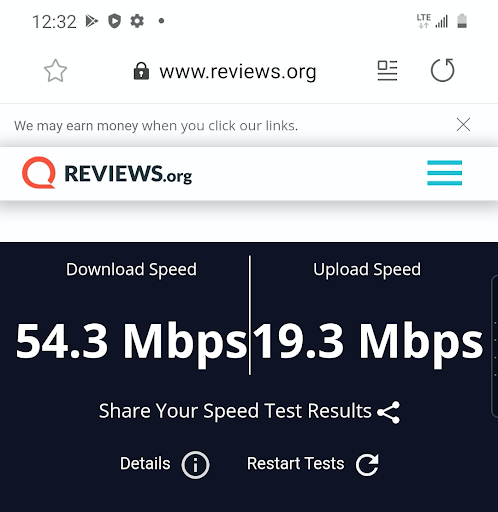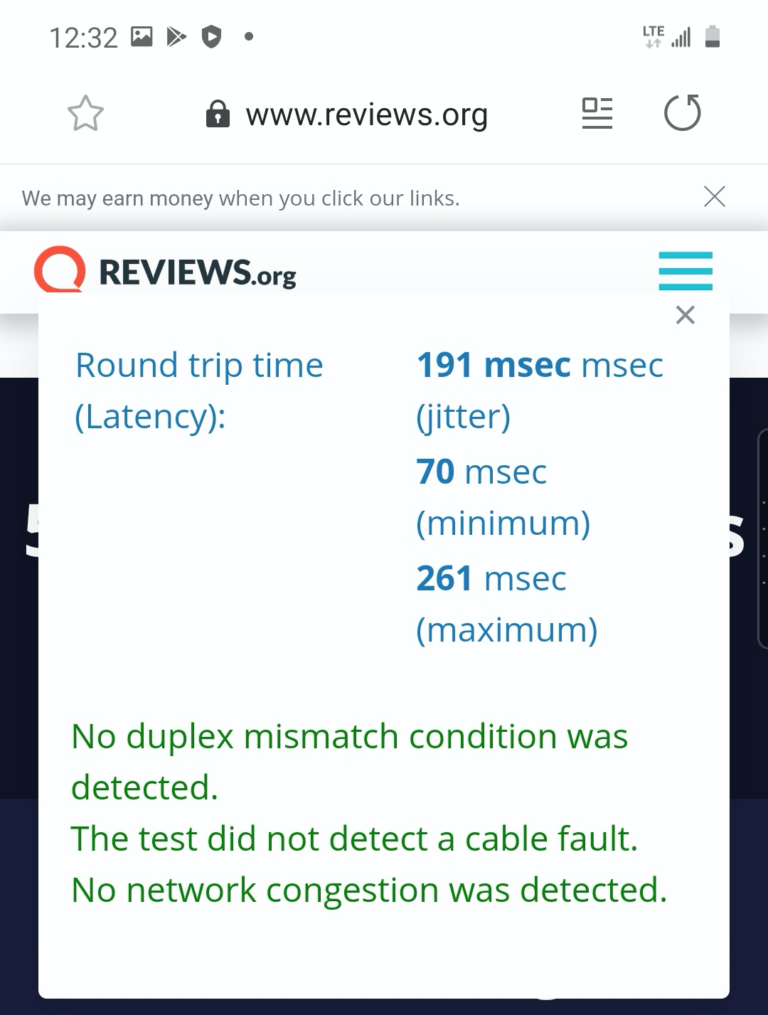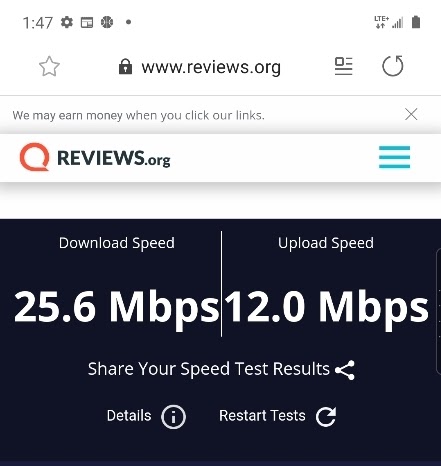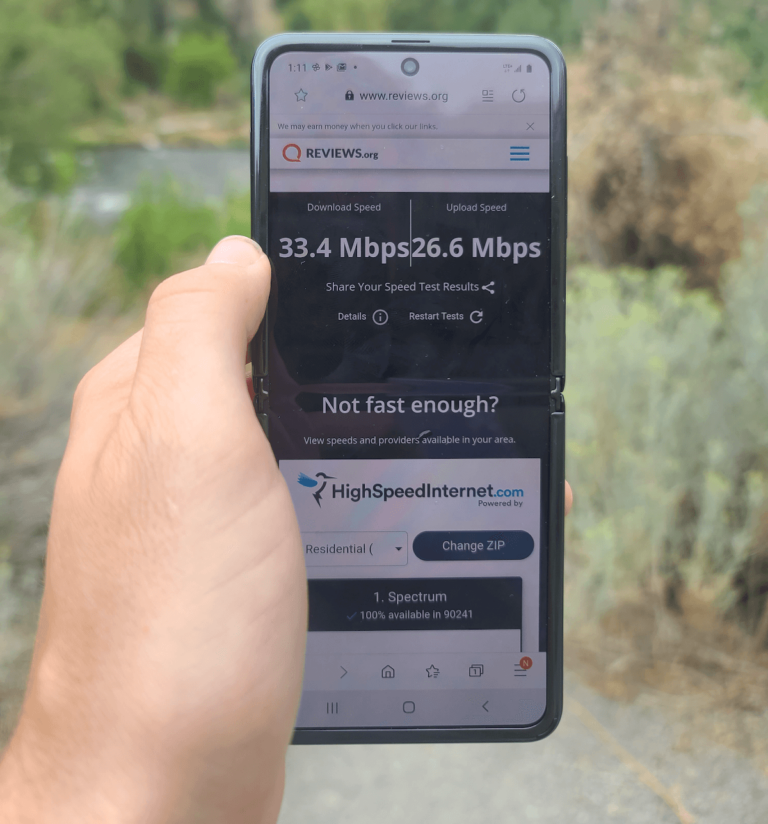T-Mobile Speed Test: Actual Speeds vs. Advertised Speeds
T-Mobile’s calling card has been its super-fast data speeds, and we’re going to find out if the data speeds are all they're chalked up to be. In theory, you should be able to open a web browser page or refresh Twitter more quickly on T-Mobile than you could with other carriers—let’s find out if that’s true.
We’re especially curious to find if anything has changed since the Sprint and T-Mobile merger from a data-speeds standpoint. Historically speaking, Sprint wasn’t the fastest gun in the west when it came to data speeds, but who knows, maybe T-Mobile’s data speeds will have improved with the merger.
The following T-Mobile speed test took place in three different geographic locations in the state of Utah.
Data speeds affect how quickly you can do things on the internet on your phone’s 4G connection. The more data speed you have, the more quickly you can Google things, refresh Instagram, and stream YouTube.
How fast is T-Mobile’s data?
- Suburban speed test result: 54.3 Mbps download speed
- City supermarket speed test result: 25.6 Mbps download speed
- Wilderness speed test result: 33.4 Mbps download speed
What are T-Mobile’s advertised speeds?
Per T-Mobile, you can expect your download speeds to land somewhere in the range between 9–47 Mbps. That’s a pretty wide range considering 9 Mbps and 47 Mbps will basically feel as different as going 20 mph on the freeway versus 100 mph. We sampled over 150,000 wireless users in 2020 to get some averages for each major wireless provider. T-Mobile users averaged a 32.73 Mbps average, the second best among the major networks in 2020.
T-Mobile wireless speed test
We performed a T-Mobile data speeds test in three different locations—a crowded supermarket in the city, a house in the suburbs, and a couple miles into a hike in a remote location. These were the results we got running our speed tests at the different locations.
Now let’s zoom in on each individual test and see how things looked.
Speed test from home in the suburbs
- Download speed: 54.3 Mbps
- Upload speed: 19.3 Mbps


Maybe it’s the recent Sprint merger, but it looks like T-Mobile is exceeding expectations compared to advertised speeds. Our speed test produced consistent results in the 54 Mbps range for T-Mobile, which blows OpenSignal’s 25.8 Mbps average out of the water. To put that number in context, this is how long it took to open YouTube and start playing a video.
Speed test at the supermarket
- Download speed: 25.6 Mbps
- Upload speed: 12.0 Mbps
It’s normal to expect data speeds to dip in more congested areas, but let’s find out how much T-Mobile is affected in a crowded supermarket. Few areas are more crowded than my local Trader Joe’s on a weekday afternoon.

Yikes! T-Mobile’s data speeds dropped by more than 50% while galavanting around Trader Joe’s. In other words, it can take twice as long to pull things up on the internet in a congested network with T-Mobile. Compare the YouTube test we performed at Trader Joe’s versus the one we performed at home.
It’s only the difference of a second or two, but that buffering wheel completes three whole revolutions before starting the stream, whereas the at-home test took a single wheel spin before starting. Lower data speeds add up the longer you stream, and you’ll likely reach a point where your video plays faster than your phone can download the data. In other words, you’ll reach a point where a video will stop playing, and you’ll need to wait for buffering.
Slower data speeds in congested areas can be especially annoying when you quickly need to look something up to settle an argument, or you need to look up a location on your GPS app while at a crowded stop light, and it takes forever.
Speed test from a hike
- Download speed: 33.4 Mbps
- Upload speed: 26.6 Mbps
The supermarket test wasn’t a great look for T-Mobile’s data speeds, but now let’s test it while hiking in the wilderness. You never know if you might need to use your GPS app deep in the woods, or call a Lyft to pick you up when you get lost.

T-Mobile’s data speeds took a significant hit when going off the grid. It’s not quite as bad as it looked in a crowded supermarket, but it’s still a huge dip compared to the data speeds you can expect at home. Granted, 33.4 Mbps is still plenty of download speed to call a Lyft or check your GPS, but it can take longer than it would compared to other wireless services.
Though T-Mobile’s download speeds have been very up and down, T-Mobile’s upload speeds have consistently been impressive. The more upload speed you have, the more quickly you can post your own Instagram stories and TikToks.
Despite the lower data speeds, T-Mobile still performs quite well in the streaming department. Our YouTube test took a second or two longer to load than T-Mobile did at home, but it still pulled up a video surprisingly quickly.
T-Mobile speed test takeaways
Honestly, we were hoping for better from T-Mobile’s download data speeds, but for the record, we were pleasantly surprised with its upload speeds and wireless streaming quality. But our tests showed that T-Mobile’s network is really affected by congested areas like supermarkets, and going off the grid. To T-Mobile’s credit, its data speeds never reached a rock-bottom point where you couldn’t perform basic internet tasks.
T-Mobile cell phone plans
For those of you interested in T-Mobile’s plans, especially since the Sprint and T-Mobile merger finally finished, take a look at the unlimited options.
We’re trying to gather as much info as possible as what T-Mobile speeds feel like all around the country, so please let us know your experience in the comments below!
Related Articles



